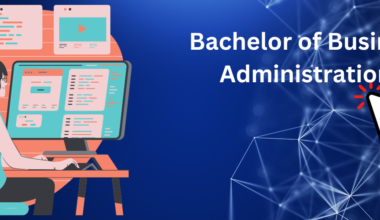Project-Based Learning (PBL) is a teaching method where students learn by actively engaging in real-world and meaningful projects. It’s a hands-on approach that encourages students to explore and solve problems, making learning more interesting and effective.
Student engagement is key to learning because when students are interested, they pay attention, ask questions, and really think about what they’re doing. This leads to a better understanding of the material.
The power of PBL lies in its ability to help students understand things deeply. By working on projects, they care about, students can see how what they’re learning applies to the real world. This ensures that they retain the lessons they learn long after completing the project.
In this blog post, we will explore the power of project-based learning.
The Essence of Project-Based Learning
Project-Based Learning (PBL) is a way of teaching where students get involved and use what they learn to solve real problems. Instead of just listening to teachers and memorizing facts, students work on projects for days, weeks, or even months.
Here’s why PBL is special:
- Engagement: PBL makes learning fun because students work on projects they care about.
- Application: PBL helps students use what they learn in real life, not just for tests.
- Skills Development: PBL helps students get better at thinking, researching, and working with others.
- Relevance: PBL shows students why what they’re learning matters in the real world.
- Problem Solving: PBL teaches students to solve problems by thinking creatively and trying out different ideas.
Why does PBL matter?
Project-Based Learning (PBL) is significant because it teaches students not only to memorize information but to apply it in meaningful ways. Here’s why PBL is valuable:
- Critical Thinking: PBL pushes students to think deeply about problems and find their own solutions. Instead of just following directions, they learn to ask questions and consider different perspectives.
- Collaboration: Many PBL projects involve teamwork, teaching students how to work with others, share ideas, and support each other—a vital skill for any job or group activity.
- Communication: PBL often requires students to present their projects to others, improving their ability to explain their ideas clearly and listen to feedback.
- Responsibility: Students who invest in their projects strive for excellence. This teaches them to manage their time, meet deadlines, and persevere through challenges.
- Self-Direction: PBL empowers students to make choices about what they study and how they work. This fosters independence and helps them set and achieve goals on their own.
The Impact of PBL on Student Engagement
Project-Based Learning (PBL) greatly boosts student engagement by tapping into their natural curiosity and desire to understand the world. Here’s how PBL fosters a “need to know” attitude:
- Intrinsic Motivation: PBL projects usually revolve around real-life issues or questions that students genuinely find interesting. This relevance to their own lives motivates students to delve deeper and comprehend thoroughly.
- Active Participation: Rather than just receiving information, students actively participate in PBL. They research, discuss, and create, which keeps them engaged and invested in their learning journey.
- Ownership of Learning: PBL empowers students with a sense of control over their education. They select their projects, set goals, and determine how to achieve them. This sense of responsibility makes them more dedicated to their work.
- Meaningful Goals: By focusing on meaningful goals, PBL helps students understand the importance of their learning. They’re not simply studying for a test; they’re learning to achieve something meaningful to them.
- Collaborative Environment: PBL often involves collaborative group work, which is more engaging than solitary work. Students exchange ideas, learn from each other, and foster a community of learners.
Implementing PBL in the Classroom
Implementing project-based learning (PBL) in the classroom involves several crucial steps:
- Crafting the Curriculum: Teachers must develop or adjust their lesson plans to incorporate projects that address real-world issues. These projects should captivate students’ interest and align with the curriculum objectives.
- Engaging Student Interests: It’s essential to select projects that resonate with students. This may involve allowing them to choose project topics or linking projects to local or global issues.
- Establishing Learning Goals: Each project should have specific objectives outlining what students are expected to learn. These goals can encompass knowledge acquisition, such as understanding a historical event, or skill development, such as conducting research.
- Shifting the Teacher’s Role: In PBL, teachers take on a different role. They guide students in finding information and learning through the projects, offering support, advice, and guidance to keep them on track.
- Providing Resources and Assistance: Teachers need to ensure students have the necessary resources to complete their projects. This could include materials like books or art supplies, as well as assistance, such as teaching them how to use certain computer programs.
- Evaluating the Work: PBL goes beyond just the final project; it’s also about the process. Teachers must consider how to assess the work, taking into account both the end product and the journey students took to get there.
Challenges and Considerations
Despite its numerous advantages, project-based learning (PBL) poses certain challenges. It necessitates a change in perspective from both teachers and students. Educators must embrace a less rigid teaching environment, while students must acclimate to a more autonomous learning approach. Moreover, evaluating PBL can be intricate, as it entails assessing not only the end result but also the journey and soft skills cultivated during the process.
Conclusion
Project-based learning transcends being merely a trendy term in education; it stands as a potent method of teaching and learning capable of captivating students and fostering a profound comprehension of their subjects. With its emphasis on real-world relevance and student-led initiatives, PBL possesses the capacity to transform education and equip students for triumph in the 21st century. This makes it particularly relevant for institutions striving to be recognized as the best undergraduate colleges in Ghaziabad.






